Tasmania’s rich traditional fishing culture could provide new fishing and food opportunities for Aboriginal Tasmanians
By Christine Fotis
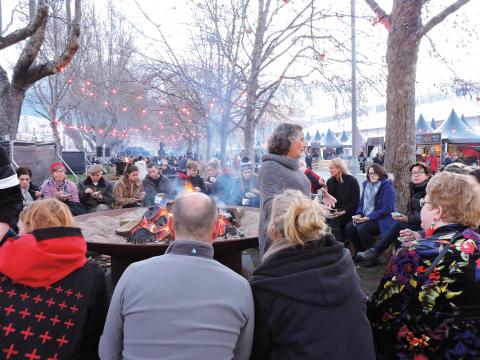
Aunty Netty Shaw hosting an evening of Palawa Fire Pit at Dark Mofo Winter Feast 2018. Photo: Emma Lee
At last year’s Dark Mofo festival in Hobart, guests were treated to fireside stories by local Aboriginal Elders while dining on Indigenous seafood delicacies, such as scorched scallops with pickled kelp and warrigal greens. Also on the menu were oysters with eucalyptus cream, alpine mint and sea celery, and wild harvested abalone served with either smoked butter and seablite, or bull kelp and saltbush.
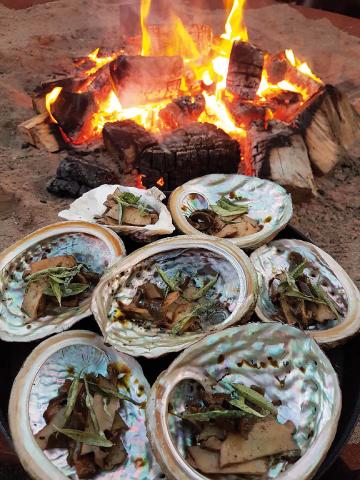
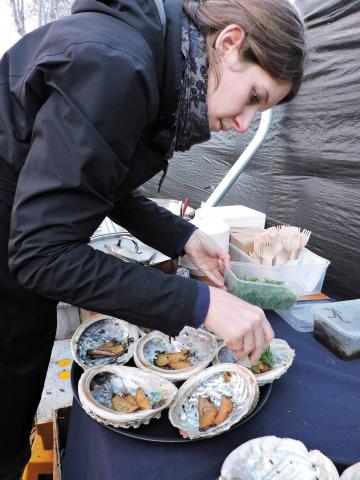
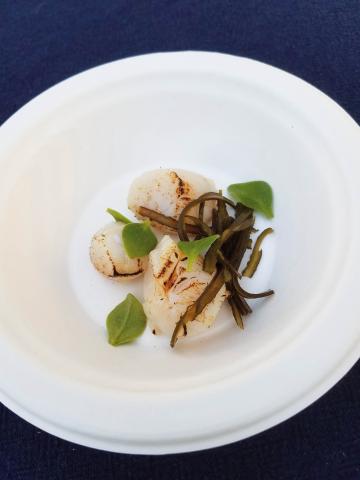
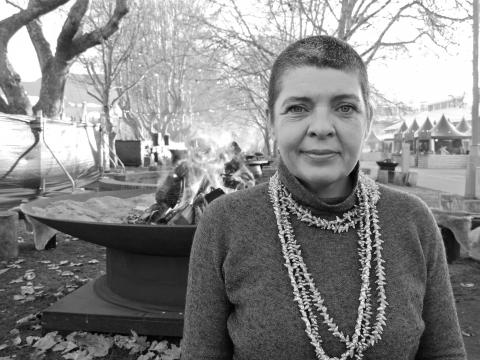
There were six fireside feasts catering for a total of 180 people. This demonstrated a strong public appetite for engagement with Indigenous culture and foods, says researcher Emma Lee, who helped coordinate the events as part of the FRDC-funded ‘Wave to Plate’ project.
She sees this kind of event as providing opportunities to share culture while developing new business and social enterprises. These could be based on small-scale partnerships with Indigenous communities and local businesses – once policies surrounding the definitions and rights of Aboriginal activity permits have been updated to allow it.
Emma Lee is based at the Centre for Social Impact, Swinburne University of Technology, and is also an adjunct lecturer with the Centre for Marine Socioecology at University of Tasmania. As an Aboriginal person, she has a particular focus on sharing culture through food.
The Wave to Plate project kicked off in March 2017 to identify opportunities and barriers to the greater involvement of Indigenous people in Tasmania’s fisheries and food tourism industries.
The idea for the Dark Mofo fireside feast came from a one-day Indigenous fisheries workshop to assess and improve partnership development in fisheries and marine research. Held in Eaglehawk Neck, Tasmania, in February 2018, the workshop brought together 40 participants, including Australian and Tasmanian government representatives, local Aboriginal community members and researchers.
The workshop featured a lunch of seafood harvested under an Aboriginal activity permit. This sparked the concept of the fireside feasts, dished up from the Palawa Fire Pit, as part of Hobart’s Dark Mofo festival.
“Dark Mofo has been about gaining the social licence and understanding that people want to get involved in experiencing Indigenous foods,” Emma Lee says.
“This was the first time that a ticketed event had been held as part of Dark Mofo, and it was the first time the event had engaged broadly with Aboriginal Tasmanian peoples’ communities. The fireside feast was sold out within a week and a half of advertising.”
While featuring native ingredients, the menu was prepared by non-Indigenous Huon Valley chefs Asher Gilding and Franca Zingler – a cross-cultural collaboration producing native food for a Western palate.
The Elders participating in the event came from diverse Tasmanian communities, including artist Aunty Netty Shaw and Amnesty International human rights advocate Rodney Dillon.
The event was so popular it will be returning for Dark Mofo in 2019.
However, Emma Lee says one of the greatest barriers to increasing Indigenous participation in activities such as this in Tasmania are the restrictions related to on-selling seafood harvested under Aboriginal activity permits.
The event provided an important opportunity to test the interest in Indigenous cultural and food experiences. But a longer term solution needs to provide greater clarity about what is allowable under the activity permit. This might include considering changes that would better support Indigenous social enterprise.
“Once we’ve been able to articulate what the barriers are, addressing them just becomes part of the process to remove discrimination,”
Emma Lee says.
She says reviewing the Tasmanian Aboriginal activity permit rights and definitions would allow a new focus on modern economies and shared fishery knowledge to produce a different kind of fishery rights access in Tasmania – that of Indigenous cultural fisheries.
This could include managing sea country in partnership with the Tasmanian Government and other fisheries stakeholders, as well as the promotion and sharing of culture and heritage. This might take the form of guided tours, or gathering and serving seafood to share.
“One of the things that we’ve been able to demonstrate is the cultural strength and asset that communities can actually build a business on,” Emma Lee explains. “People are able to engage in broader community engagement in caring for sea country, in understanding Tasmanian Aboriginal connections to our seafood and our culture, through just being able to sit down and have a feed.”
Partners in the research include the FRDC; Department of Primary Industries, Parks, Water and Environment (Tasmania); University of Tasmania; Swinburne University of Technology; and the Tasmanian Regional Aboriginal Community Alliance.
Photo captions (from top right)
Scorched scallop, pickled bull kelp and warrigal greens.
Photo: Taimeka Mazu
Chef Franca Zingler preparing abalone.
Photo: Emma Lee
Indigenous wild-catch abalone.
Photo: Emma Lee
Emma Lee, Researcher.
FRDC Research Code: 2016-204
More information
Emma Lee, 0458 805 993
ejlee@swin.edu.au
Centre for Marine Socioecology – Wave to Plate





